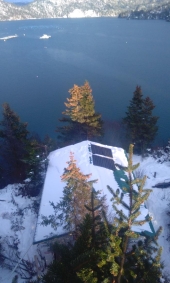
 3
3




 6
6





 5
5




For all your Montana Masonry Heater parts (also known as) Rocket Mass heater parts.
Visit me at
dragontechrmh.com Once you go brick you will never go back!








 4
4




Dewy Pike wrote:Which brings up a question that's probably answered in here somewhere if I could find it, but my thinking is that the internal volume of the box itself is a less crucial dimension (within reason) relative to the more "functional" dimensions of the ratio of combustion air inlet, port size, and area of riser. Does that make any sense?
regards, Peter




Peter van den Berg wrote:
Dewy Pike wrote:Which brings up a question that's probably answered in here somewhere if I could find it, but my thinking is that the internal volume of the box itself is a less crucial dimension (within reason) relative to the more "functional" dimensions of the ratio of combustion air inlet, port size, and area of riser. Does that make any sense?
According to what you are mentioning, the riser is 6.5 inch square. A square is comparable to a circle as far as aerodynamics in a vertical tube are concerned. Provided the diameter of the circle is the same as one of the sides of the square.
Your system is a 6.5" one, so the proposed firebox is far too large. Height and wdth of the firebox should be roughly 14"x 9.4", 18"x 18' is far too large. I fully expect the thing to smoke like mad with a box like that filled with cord wood and an undersized afterburner behind it. Dimensions of the firebox are paired with the afterburner function's capacity, so the volume of the box and its dimensions are as crucial as all the others, they form a fixed set. There's one exception, though, depth of the firebox could be 25% oversized without compromising complete combustion.
As Fox James mentioned, the design is really tight, meddling with proportions won't pay off.
Of course you are entitled to do what you see fit, it's your house, your heater.




Fox James wrote:Hi Dewy, Whatever size you build, you must stick to Peters spec's, bricks are cut to size with a wet cutter so they can be used in any size box.
You need a buffer between different materials ie … bricks, CFM, steel.




 2
2




For all your Montana Masonry Heater parts (also known as) Rocket Mass heater parts.
Visit me at
dragontechrmh.com Once you go brick you will never go back!
 1
1





|
Tomorrow is the first day of the new metric calendar. Comfort me tiny ad:
The new purple deck of permaculture playing cards
https://www.kickstarter.com/projects/paulwheaton/garden-cards
|








